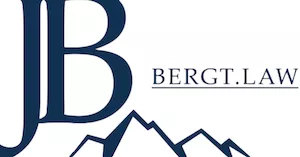Introduction
In an era where digital transformation is rapidly reshaping the financial sector, regulatory frameworks are evolving to keep pace with technological advancements. The European Union (EU) has recently enacted the Markets in Crypto-Assets Regulation (MiCAR), a seminal piece of legislation aimed at providing a harmonized regulatory environment for crypto-assets across the member states. This legislation, which was ratified by the European Parliament on April 20, 2023, and subsequently approved by the European Council on May 16, 2023, came into effect on June 29, 2023. This article seeks to offer a comprehensive analysis of MiCAR, elucidating its objectives, scope, and implications for various stakeholders, including issuers of crypto-assets and Crypto Asset Service Providers (CASPs).
Objectives and Scope of MiCAR
Aims and Historical Context
MiCAR was proposed by the European Commission on September 24, 2020, as part of a broader package aimed at digitalizing the financial sector. This package also included the Digital Operational Resilience Act (DORA) and a proposal for a pilot regime for market infrastructures based on Distributed Ledger Technology (DLT). The primary objective of MiCAR is to foster innovation while ensuring financial stability and investor protection by creating a unified regulatory framework for crypto-assets.
Regulatory Content
MiCAR delineates regulations for both primary market activities, such as the issuance of crypto-assets, and secondary market services, known as "crypto-asset services." Specifically, MiCAR imposes transparency and disclosure obligations for the issuance and trading of crypto-assets, mandates the licensing and supervision of CASPs and issuers of crypto-assets, and sets forth provisions for investor and consumer protection, as well as measures to combat market abuse on crypto trading platforms. MiCAR creates a level playing field on the European Single Market, making the license and its services passportable throughout the European Union and European Economic Area. One of the key advantages is the clear delineation of securities respectively security tokens which represent financial instruments.
Detailed Provisions and Timelines
Asset-Referenced Tokens (ART) and E-Money Tokens (EMT)
Regulations concerning ART and EMT, as outlined in Titles III and IV of MiCAR, will become applicable on June 30, 2024. These tokens are subject to specific transparency and disclosure requirements, and their issuers must obtain approval from the relevant supervisory authority.
CASP Regulations
Provisions regarding the licensing and ongoing supervision of CASPs, encapsulated in Title V, will come into effect on December 30, 2024.
Additional Provisions
Other regulations, particularly those in Titles II and VI, will also become effective on December 30, 2024, unless otherwise specified in Article 149(4) of MiCAR.
Regulatory Oversight and Technical Standards
The European Securities and Markets Authority (ESMA) and the European Banking Authority (EBA) are concurrently developing technical regulatory standards, implementation standards, and guidelines to further clarify the application of MiCAR.
Key Definitions and Exclusions
MiCAR defines a crypto-asset as a digital representation of value or rights, which can be electronically transferred and stored using DLT or similar technology. However, MiCAR does not apply to crypto-assets that qualify as financial instruments under MiFID 2, E-money under EMD 2, or deposits under the Deposit Guarantee Schemes Directive, among others.
Implications for Issuers and CASPs
Issuers of ART and EMT are subject to various obligations, including the preparation of a whitepaper, which must be approved by the competent authority. Moreover, issuers are required to maintain adequate capital reserves, develop recovery and redemption plans, and adhere to governance and organizational standards.
Interim Conclusion and Key Findings
MiCAR represents a significant step towards the harmonization of crypto-asset regulations within the EU. It imposes a comprehensive set of rules on issuers and CASPs, thereby aiming to balance the promotion of innovation with the imperatives of financial stability and consumer protection.
E-Money Tokens (EMT) and Issuer Obligations
Article 49 of MiCAR outlines specific regulations concerning the issuance and redeemability of EMT. Holders of EMT have a claim against the issuer for the nominal value of the EMT. Issuers are obligated to issue EMT at face value upon receipt of a monetary amount and must offer holders the right to demand a refund of the monetary value of the EMT at any time and at face value. Furthermore, Article 50 of MiCAR prohibits issuers or crypto-asset service providers from offering interest or other benefits to EMT holders during the holding period.
Liability and Investment of Funds
MiCAR also addresses liability issues related to the content of whitepapers and prescribes rules for the investment of funds received in exchange for EMT.
Additional Obligations for Significant EMT
If EMT are classified as significant based on criteria defined in Article 56 of MiCAR, issuers are subject to additional obligations, such as higher capital requirements and reserve holdings, as stipulated in Article 58 of MiCAR. In such cases, the European Banking Authority (EBA) partially assumes supervisory responsibilities if the issuer is an E-Money institution.
Other Crypto-Assets and Exemptions
Unlike the issuance of ART or EMT, no prior authorization is required for the issuance of other types of crypto-assets. Issuers must notify and publish whitepapers to the competent authority, adhere to marketing communication requirements, and grant token holders the right to withdraw (Articles 6 et seqq. MiCAR). Issuers are also liable for the information contained in a crypto-asset whitepaper (Article 15 MiCAR). Exemptions from these obligations include issuers or providers of crypto-assets that are offered free of charge or are mining rewards (Article 4(3)(b) MiCAR).
Defined Crypto-Asset Services
MiCAR defines a range of crypto-asset services, including custody and management of crypto-assets, operation of trading platforms, exchange of crypto-assets for money or other crypto-assets, execution of orders, placement of crypto-assets, and advisory services among others (Article 3(1)(16 a) to j); 17 to 26 MiCAR).
- Custody and Management of Crypto-Assets for Clients: This service involves the secure storage or control of crypto-assets or the means to access such assets for clients, potentially through private cryptographic keys.
- Operation of a Trading Platform for Crypto-Assets: This entails the management of one or more multilateral systems that facilitate the buying and selling of crypto-assets by bringing together the interests of multiple third parties, leading to a contractual exchange of crypto-assets for money or other crypto-assets.
- Exchange of Crypto-Assets for Money: This involves entering into contracts with clients for the purchase or sale of crypto-assets against a monetary amount, using one's own capital.
- Exchange of Crypto-Assets for Other Crypto-Assets: Similar to the previous service, this involves contracts for the purchase or sale of crypto-assets against a monetary amount but focuses on the exchange of different types of crypto-assets.
- Execution of Orders for Crypto-Assets for Clients: This service includes the conclusion of agreements for the purchase or sale of one or more crypto-assets or the subscription of such assets for clients, including at the time of their public offering or admission to trading.
- Placement of Crypto-Assets: This involves marketing crypto-assets to buyers on behalf of or for the account of the provider or an affiliated party.
- Acceptance and Transmission of Orders for Crypto-Assets for Clients: This service includes accepting an order from a person for the purchase or sale of one or more crypto-assets or for the subscription of such assets and transmitting this order to a third party for execution.
- Advisory Services on Crypto-Assets: This involves offering or providing personalized recommendations to clients regarding one or more transactions in crypto-assets or the use of crypto-asset services.
- Portfolio Management of Crypto-Assets: This service involves managing portfolios on an individual client basis with discretionary authority within the scope of a client mandate, provided these portfolios contain one or more crypto-assets.
- Provision of Transfer Services for Crypto-Assets for Clients: This involves providing services for the transfer of crypto-assets from one Distributed Ledger address or account to another such address or account for a natural or legal person.
Regulatory Requirements for Service Providers
According to Article 59 of MiCAR, crypto-asset services may generally only be provided by entities based in the EU and authorized by competent supervisory authorities as per Article 63 of MiCAR. Certain institutions, such as credit institutions and E-money institutions, are allowed to provide all or specific crypto-asset services without separate authorization, subject to notification requirements (Article 60 MiCAR).
Supervisory Landscape
In general, supervision will be carried out by the competent national supervisory authority in. For issuers of significant asset-referenced tokens, supervision is transferred to the EBA (Article 43(7) MiCAR), and for significant E-money tokens, supervision is partially transferred to the EBA (Article 56(6) MiCAR).
Prudential Requirements and Insurance Policies
MiCAR allows for the fulfillment of prudential requirements through insurance policies, as specified in Article 67(4)(b) and 67(5) and (6) MiCAR. Institutions opting for this insurance solution must ensure that all requirements are continuously and unconditionally met.
DLT Network Node Operators and Validators
The exclusive activity as a DLT network node operator or validator is generally not considered a licensable activity under MiCAR, provided these activities are solely for the purpose of confirming a transaction and updating the status of the Distributed Ledger (Recital 93 MiCAR).
Source: BaFin on services and activities related to crypto assets under MiCAR.
Executive Summary:
- MiCAR aims to provide a harmonized regulatory framework for crypto-assets in the EU and EEA.
- The regulation distinguishes between primary and secondary market activities and imposes specific obligations on issuers and CASPs.
- MiCAR will be implemented in phases, with various provisions becoming effective at different times.
- ESMA and EBA are working on technical standards to further clarify the application of MiCAR.
- Certain crypto-assets, such as those qualifying as financial instruments under MiFID 2, are excluded from the scope of MiCAR.
- MiCAR imposes specific obligations on issuers of EMT, including issuance at face value and redeemability at any time.
- Significant EMT issuers are subject to additional obligations, including higher capital and reserve requirements.
- MiCAR defines a broad range of crypto-asset services and sets forth regulatory requirements for providers.
- Certain institutions, such as credit institutions and E-money institutions, can provide crypto-asset services without separate authorization.
- Prudential requirements can be met through insurance policies, subject to specific conditions.
- DLT network node operators and validators are generally not considered licensable activities under MiCAR, subject to certain conditions.
- Custody and Management services often involve the use of cryptographic keys for secure storage.
- Trading Platforms serve as intermediaries, facilitating the exchange of crypto-assets among multiple parties.
- Exchange Services are capital-intensive as they require the use of the provider's own capital.
- Order Execution can include activities during the public offering or trading admission of crypto-assets.
- Placement Services are closely tied to marketing activities and may involve affiliated parties.
- Order Transmission involves a third-party execution, making it a multi-step process.
- Advisory Services are personalized and can be initiated either by the client or the service provider.
- Portfolio Management gives the service provider discretionary authority but within the limits of a client mandate.
- Transfer Services are essential for the mobility of crypto-assets between different Distributed Ledger addresses or accounts.
The content of this article is intended to provide a general guide to the subject matter. Specialist advice should be sought about your specific circumstances.

